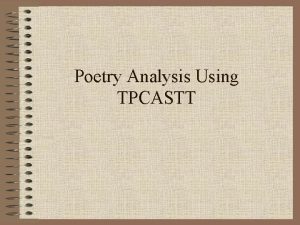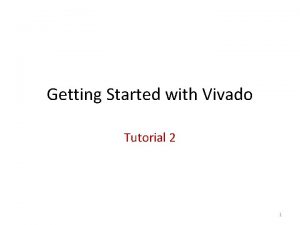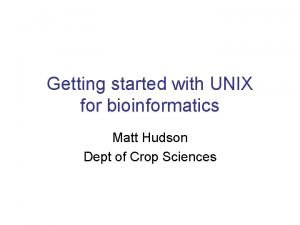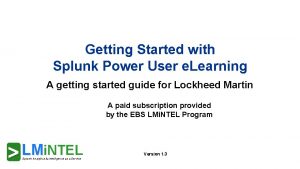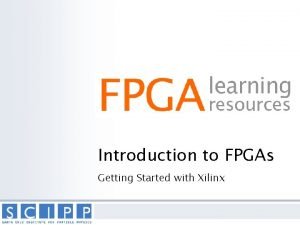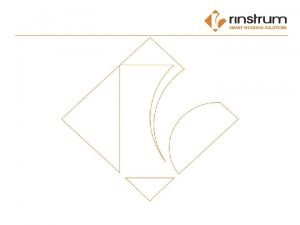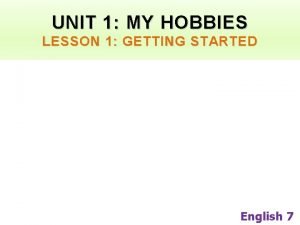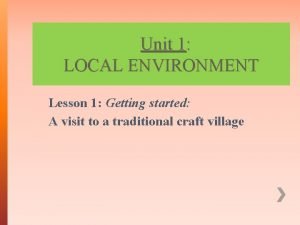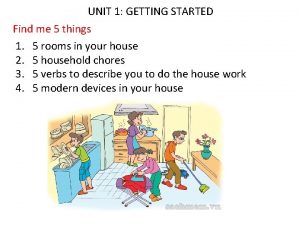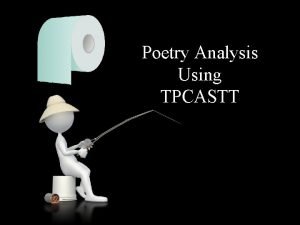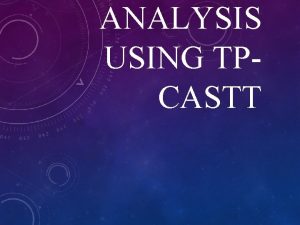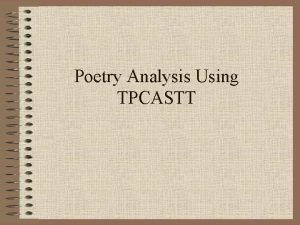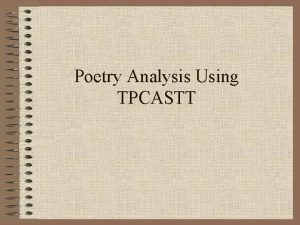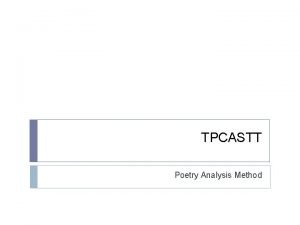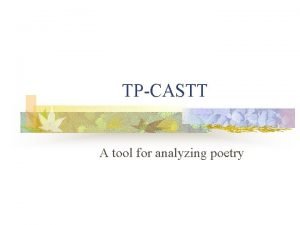Poetry Analysis Using TPCASTT Getting Started TPCASTT is












- Slides: 12

Poetry Analysis Using TPCASTT

Getting Started… • TP-CASTT is a process to help you organize your analysis of poetry. • When successful, you will reveal true and deeper meanings in a poem; thus, write stronger literary analysis essays.

T is for TITLE • Analyze the title first: – What do you predict this poem will be about? • Write down your predictions. • We will reflect on the title again after we have read the poem.

READ THE POEM!!!!

P is for PARAPHRASE • Paraphrasing is putting something in your own words. • After reading the poem, rewrite it in your own words. • This may be three sentences or a page, depending on the particular poem. • While this may seem tedious and boring, it is a way to make you think about the poem line by line.

C is for CONNOTATION Sound Terms: Alliteration, assonance, consonance, end rhyme, internal rhyme, diction Figurative Language: Personification, metaphor, simile, synecdoche, hyperbole, symbolism, imagery, understatement, irony, paradox • Analyze the figures of speech and sound elements of the poem. • Use your literary terms for analyzing • How do these elements add to the meaning?

A is for ATTITUDE • Tone is the attitude of the speaker toward the subject of the poem. • What is the tone of this poem?

S is for SHIFT • If there is a change in… –Time –Tone –Speaker This should always be noted as this will also affect the meaning. • Check your poem for shift.

T is for TITLE (again) • At this time, you should reconsider the title. • Were you right in your predictions? • What other meanings might the title have in light of your analysis? • If you still have no clue as to what the title means, reread the poem because you are missing something big.

T is for THEME • Theme is the general insight into life conveyed by the author through his/her work. • It does not make a judgment. – Ex. “Don’t do drugs” is not a theme; it is a moral. • It merely states something true to life and the human condition.

How do I find the THEME? • Look at the other parts of TPCASTT. – What connections do you notice between these lit elements? – What insight are all of these working together to convey? • Ask yourself: What is the poet trying to say about life?

Review: TP-CASTT • Make predictions based on the Title • Paraphrase the poem • Determine Connotation by searching for literary terms • Analyze the speaker’s Attitude to determine the tone of the poem • Search for Shifts in time, tone, and speaker • Analyze the Title again in light of you reading the poem. • Determine the Theme of the poem based on your readings and the other steps of TP-CASTT.
 The secret to getting ahead is getting started
The secret to getting ahead is getting started Paraphrase tpcastt
Paraphrase tpcastt Getting started with vivado
Getting started with vivado Unix for bioinformatics
Unix for bioinformatics Splunk e learning
Splunk e learning Rancher getting started
Rancher getting started Getting started with excel
Getting started with excel Outlook tutorial 2010
Outlook tutorial 2010 Getting started with xilinx fpga
Getting started with xilinx fpga Getting started with lua
Getting started with lua Unit 1 getting started
Unit 1 getting started Unit 1 getting started
Unit 1 getting started Find these things in unit 1
Find these things in unit 1

